Selection and use of surge protectors
Surge protection (surge protectors or SPDs) is becoming more common in overvoltage protection in the wind energy industry due to the high losses of electrical and electronic components.
How to judge the use of surge protector How to choose it?
1. Judging basis: Basically, all electrical equipment is to be lightning-proof, and electrical appliances that are connected to pure power (such as lighting, air conditioners, refrigerators, etc. in the home) are relatively less susceptible to lightning damage. Simultaneous access to power and signals (such as home computers, TVs, etc.) is easily damaged by lightning strikes.
2. Choice method: Install the surge protector according to the actual conditions of the equipment to be protected. What is the power supply method? What kind of signal line is there? There is also the choice of lightning intensity in its own environment. For equipment with both power and signal lines, it is not allowed to install only lightning arresters or signal lightning arresters.
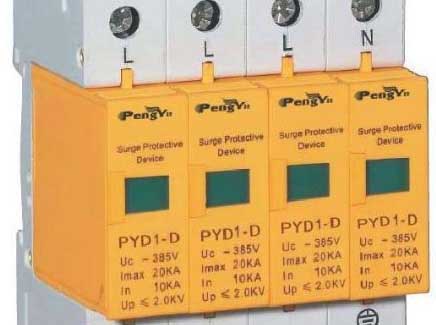
Surge protector selection and use
When choosing to install a surge protector, first consider the design of the grid (eg TN-S system, TT system, IT system, etc.). The installation location of the surge protector should also be considered, and its placement position and the distance between the protected equipment should be appropriate. If the surge protector is placed too far away from the protected equipment, then the protected equipment cannot be effectively protected; If it is too close, an oscillating wave will be generated between the device and the surge protector, and even if the device is considered to be protected, a huge overvoltage will be generated on the protected device.
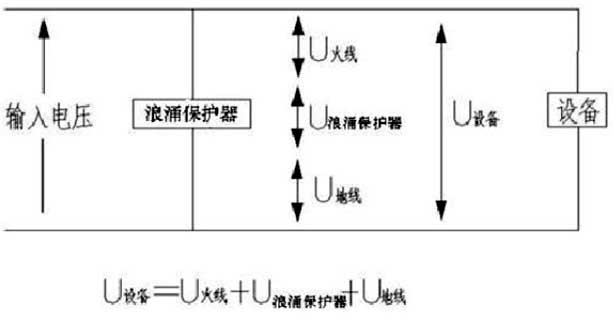
The installation in the figure above exposes a problem: The installation will produce a fault current of 1kA/μs, which will result in a voltage drop of 1000 volts per meter of connection to the surge protector. If the wiring is 0.5 m for the 1 m ground wire, the protected device will withstand the surge voltage of the surge protector plus 1500 volts, which can be greatly reduced by properly installing the surge protector. The ideal installation method is as follows:
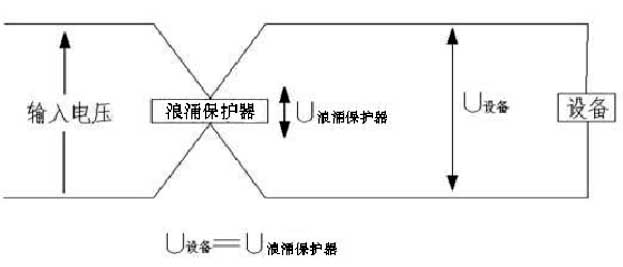
According to the above installation method, the protected device will only withstand the lowest voltage almost equal to the surge protector clamping voltage. Some surge protectors require additional protection, such as fuses that are not damaged by heat, to ensure that the surge protector handles energy levels. Surge protectors from other manufacturers can handle all current before the main breaker of the fan is shorted. When selecting overvoltage protected components, consider whether it is necessary to use more components to protect the surge protector. A rough protection is usually to install a surge protector at the entrance of the device, while fine protection is to install the surge protector directly on the protected device.
According to the current development of surge protectors. Simply install a unit, or a combination of rough protection and fine protection, or a simple large surge protector built on fine-grained protection for maximum protection.
Once the installation location of the surge protector is selected, the level of the surge protector is selected. All surge protectors are divided into different levels based on the energy they can be introduced into the ground. The lower the level of surge protector, the higher the clamping voltage is required. This leads to an increase in pressure on the protected equipment. The more vulnerable a protected device is, the more it is necessary to select a high-level surge protector. In general, different installation areas are divided according to the level of protection required for a particular area. This makes the selection of surge protectors much easier, and provides an overview of what level of surge protectors are needed in a particular area. Considering the design of the surge protector in the overall lightning protection design, the lightning protection zone can be integrated with the transition zone of the surge protector, and the placement of the surge protector can be known through the transition zones of each level. (Other standards are also recommended, for example, IEC62305 series or wind turbines specified IEC61400-24)
Surge protector selection
When you need to install a surge protector after the evaluation, you need to find the right product for the system. The method of correctly selecting a surge protector is described in paragraph 6.2 of IEC 61643-12.
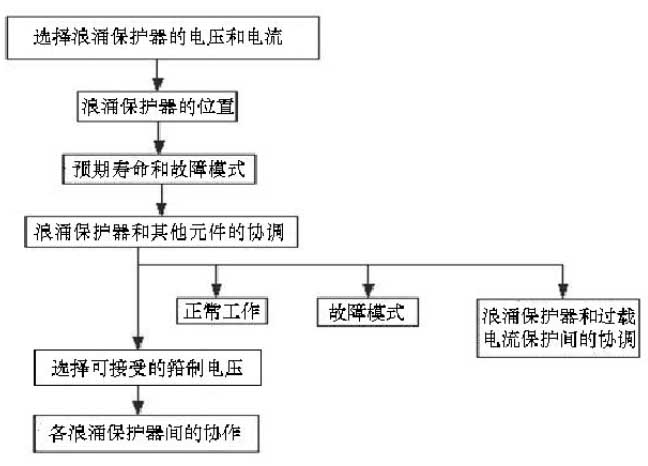
First, the maximum continuous operating voltage of all selected surge protectors is higher than the nominal operating voltage. Second, we must consider the generation of transient overvoltage; If there is a risk of transient overvoltage, the selected surge protector voltage will be lower than the maximum nominal operating voltage.
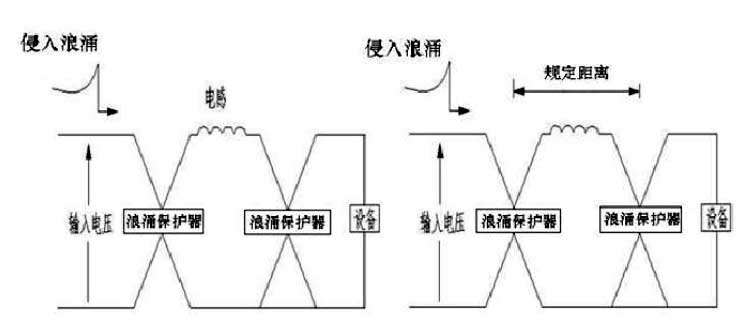
IEC61643-12 is a good guide to providing designers with information on the issues to consider when selecting and installing equipment for overvoltage protection. Although it is a universal standard, it is fully compliant with the requirements of the wind industry. Experts from all over the world can turn to and exchange knowledge and experience in lightning protection. Of course, you can also seek help from an engineering consulting firm that is very experienced in the field.
Also choose a surge protector based on the amount of current at the installation. If the amount of short-circuit current at a particular location is unknown, then ensure that a sufficiently large surge protector component is selected to handle the "best guess" current.
Determining and describing a particular location is important to ensure that the surge protector achieves the desired performance of the protection device.
Also consider the instructions/lifetime of the surge protector. Because transient high potentials can occur within one second of installation, this can destroy the surge protector, in which case the life of the surge protector is only one second.
Therefore, the surge protector can only be evaluated predictively based on data obtained from the manufacturer. If the surge protector fails, make sure it does not cause fatal damage.When using a surge protector, verify that it interacts with the protected equipment above it. If it is necessary to reduce the current in the surge protector with a fuse, these fuses must be able to cut off the short-circuit current before damaging the surge protector. Also consider the case where the leakage protector trips.
When selecting a surge protector, it is necessary to select a surge protector that is not susceptible to aging, is not easily damaged under the expected instantaneous high voltage, and is not susceptible to damage to other electrical equipment in the event of a fault.
When the surge protector is finally selected, its clamping voltage must be the same as the voltage that the protected device can withstand. If the surge protector cannot maintain the clamp voltage, install an additional surge protector near the protected equipment. If multiple surge protectors are used at the same time, it is important to properly coordinate the relationship between these surge protectors. A specified inductance is selected between the two surge protectors, and this inductance can be achieved by a fixed length of cable between the two surge protectors or by a specified inductive component. Again, with the current development of surge protectors, there is a high possibility of achieving complete protection in one step.
How to judge the use of surge protector How to choose it?
1. Judging basis: Basically, all electrical equipment is to be lightning-proof, and electrical appliances that are connected to pure power (such as lighting, air conditioners, refrigerators, etc. in the home) are relatively less susceptible to lightning damage. Simultaneous access to power and signals (such as home computers, TVs, etc.) is easily damaged by lightning strikes.
2. Choice method: Install the surge protector according to the actual conditions of the equipment to be protected. What is the power supply method? What kind of signal line is there? There is also the choice of lightning intensity in its own environment. For equipment with both power and signal lines, it is not allowed to install only lightning arresters or signal lightning arresters.

Surge protector selection and use
When choosing to install a surge protector, first consider the design of the grid (eg TN-S system, TT system, IT system, etc.). The installation location of the surge protector should also be considered, and its placement position and the distance between the protected equipment should be appropriate. If the surge protector is placed too far away from the protected equipment, then the protected equipment cannot be effectively protected; If it is too close, an oscillating wave will be generated between the device and the surge protector, and even if the device is considered to be protected, a huge overvoltage will be generated on the protected device.
Because of the simple problem of properly installing a surge protector, many surge protector installation locations are not designed properly. When installing a surge protector, first make sure it is placed at the entrance of the protected equipment; Second, properly install the grounding wire of the surge protector; The cable for the third connection surge protector should be as short as possible. According to this standard (generally), the inductance of the connecting cable is generally around 1 μH/m. So when designing the system, remember to include the live and ground wires in the connection cable.

The installation in the figure above exposes a problem: The installation will produce a fault current of 1kA/μs, which will result in a voltage drop of 1000 volts per meter of connection to the surge protector. If the wiring is 0.5 m for the 1 m ground wire, the protected device will withstand the surge voltage of the surge protector plus 1500 volts, which can be greatly reduced by properly installing the surge protector. The ideal installation method is as follows:

According to the above installation method, the protected device will only withstand the lowest voltage almost equal to the surge protector clamping voltage. Some surge protectors require additional protection, such as fuses that are not damaged by heat, to ensure that the surge protector handles energy levels. Surge protectors from other manufacturers can handle all current before the main breaker of the fan is shorted. When selecting overvoltage protected components, consider whether it is necessary to use more components to protect the surge protector. A rough protection is usually to install a surge protector at the entrance of the device, while fine protection is to install the surge protector directly on the protected device.
According to the current development of surge protectors. Simply install a unit, or a combination of rough protection and fine protection, or a simple large surge protector built on fine-grained protection for maximum protection.
Once the installation location of the surge protector is selected, the level of the surge protector is selected. All surge protectors are divided into different levels based on the energy they can be introduced into the ground. The lower the level of surge protector, the higher the clamping voltage is required. This leads to an increase in pressure on the protected equipment. The more vulnerable a protected device is, the more it is necessary to select a high-level surge protector. In general, different installation areas are divided according to the level of protection required for a particular area. This makes the selection of surge protectors much easier, and provides an overview of what level of surge protectors are needed in a particular area. Considering the design of the surge protector in the overall lightning protection design, the lightning protection zone can be integrated with the transition zone of the surge protector, and the placement of the surge protector can be known through the transition zones of each level. (Other standards are also recommended, for example, IEC62305 series or wind turbines specified IEC61400-24)
Surge protector selection
When you need to install a surge protector after the evaluation, you need to find the right product for the system. The method of correctly selecting a surge protector is described in paragraph 6.2 of IEC 61643-12.

First, the maximum continuous operating voltage of all selected surge protectors is higher than the nominal operating voltage. Second, we must consider the generation of transient overvoltage; If there is a risk of transient overvoltage, the selected surge protector voltage will be lower than the maximum nominal operating voltage.

IEC61643-12 is a good guide to providing designers with information on the issues to consider when selecting and installing equipment for overvoltage protection. Although it is a universal standard, it is fully compliant with the requirements of the wind industry. Experts from all over the world can turn to and exchange knowledge and experience in lightning protection. Of course, you can also seek help from an engineering consulting firm that is very experienced in the field.
Also choose a surge protector based on the amount of current at the installation. If the amount of short-circuit current at a particular location is unknown, then ensure that a sufficiently large surge protector component is selected to handle the "best guess" current.
Determining and describing a particular location is important to ensure that the surge protector achieves the desired performance of the protection device.
Also consider the instructions/lifetime of the surge protector. Because transient high potentials can occur within one second of installation, this can destroy the surge protector, in which case the life of the surge protector is only one second.
Therefore, the surge protector can only be evaluated predictively based on data obtained from the manufacturer. If the surge protector fails, make sure it does not cause fatal damage.When using a surge protector, verify that it interacts with the protected equipment above it. If it is necessary to reduce the current in the surge protector with a fuse, these fuses must be able to cut off the short-circuit current before damaging the surge protector. Also consider the case where the leakage protector trips.
When selecting a surge protector, it is necessary to select a surge protector that is not susceptible to aging, is not easily damaged under the expected instantaneous high voltage, and is not susceptible to damage to other electrical equipment in the event of a fault.
When the surge protector is finally selected, its clamping voltage must be the same as the voltage that the protected device can withstand. If the surge protector cannot maintain the clamp voltage, install an additional surge protector near the protected equipment. If multiple surge protectors are used at the same time, it is important to properly coordinate the relationship between these surge protectors. A specified inductance is selected between the two surge protectors, and this inductance can be achieved by a fixed length of cable between the two surge protectors or by a specified inductive component. Again, with the current development of surge protectors, there is a high possibility of achieving complete protection in one step.





